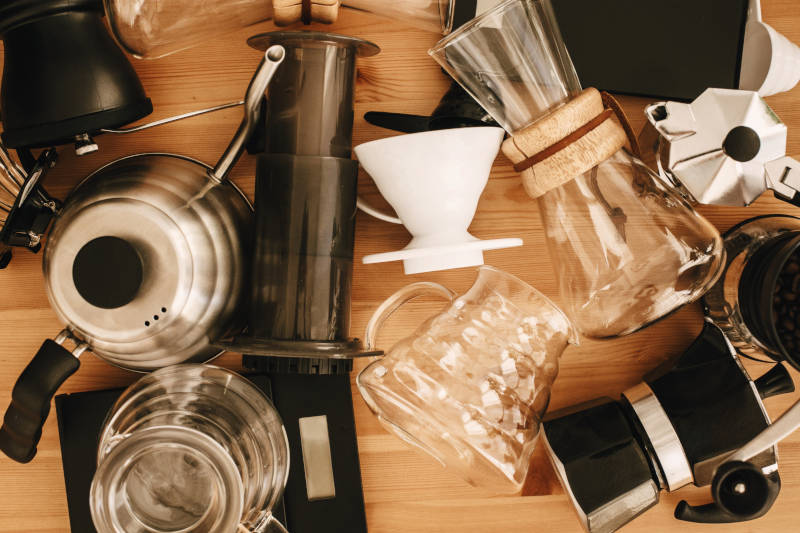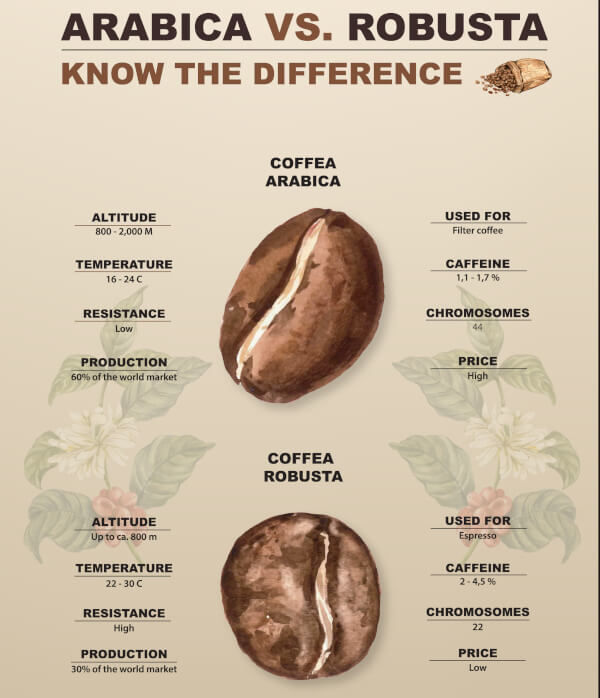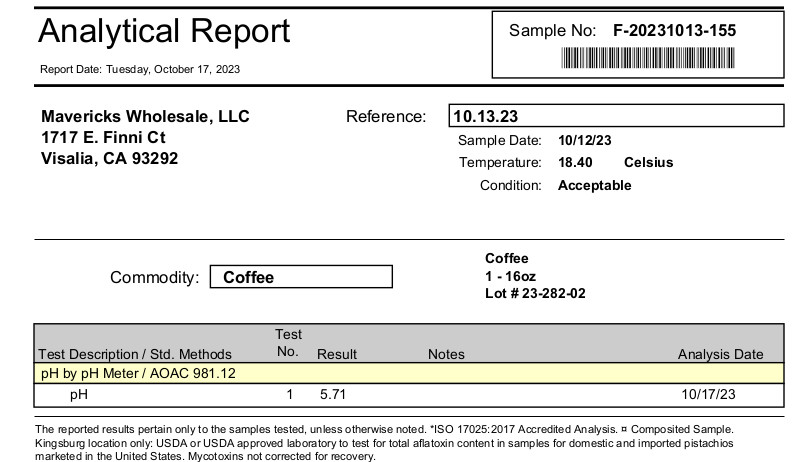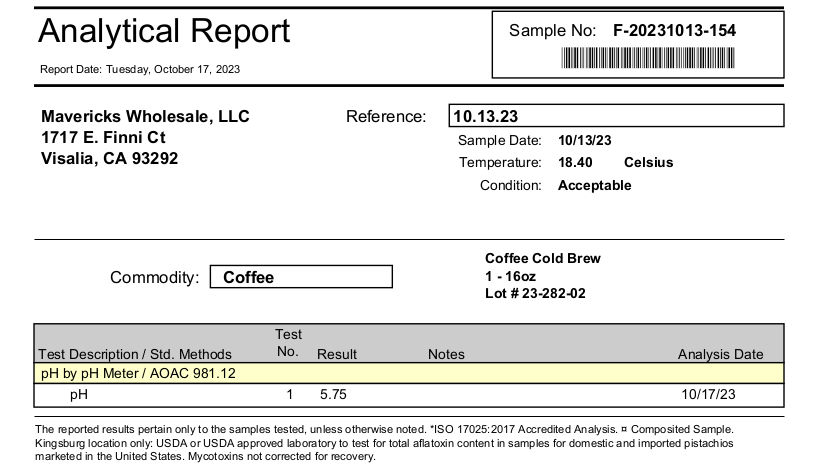
A Better Low Acid Cup of Coffee Starts With Knowledge and Understanding
A Better Low Acid Cup of Coffee Starts With Knowledge and Understanding
You have searched long and hard for your favorite fresh roasted coffee beans, and finally, you find it! You bring it home, excited to taste the amazing flavor. The last thing left to do now is brew your coffee in a way that maximizes its flavor and enjoyable qualities. When brewing your own cup of coffee at home, there are several factors you need to consider. These factors include bean quality, water, and the method of brewing that you'll select. There are many different types of brewing methods, and I will cover some of the most popular in this blog.
In addition, I will explain to you the best method of obtaining a truly low acid brew without the gimmicks or nonsense. First let's look at few basic brewing principals and perquisites.
What is coffee brewing?
It's all about extraction. By definition, coffee brewing is the process in which water is added to coffee grounds to release the coffee's flavor. The process of obtaining flavor is called extraction. In most cases, this is done by putting ground coffee beans in a filter, and then pouring hot water over them. The water then seeps through the filter into a carafe(a glass container) underneath the ground coffee beans. The amount of time the water spends in contact with the coffee grounds will affect the flavor and strength of the brew. This is the importance of extraction.
What are some keys to obtaining a good brew?
If you enjoy drinking coffee, there are many different elements that contribute to obtaining a good coffee brew with the right extracation. These might seem obvious, but they are important. I have listed a few below:
1. Use the right grind size: The grind size you use will determine the quantity of the coffee grounds, and the amount of time it will take for the water to fully extract the coffee's flavor. The grind is very important to the avoid pitfalls of under extracted coffee or, equally as bad, over extracting you coffee. Each brewing system is designed for a specific type of grind. For example, Espresso is brewed using an espresso grind (very fine grind), whereas a medium-coarse grind is used to make cold brew. It is important to know the best grind size to use when brewing your coffee. We will discuss the different brewing methods later in this blog. Suffice it to say. You can have the same coffee and grind it 2 different ways and have 2 different cups of coffee.

2. Use filtered water: When you are brewing coffee, it is best to stay away from hard water, which is water that contains high levels of minerals. Tap water contains minerals and additives that may add an off-flavor if you use it to brew your coffee. Using filtered water is your best bet as it helps guarantee that there will be no off-flavors in your coffee. It also ensures that any oils from the coffee grounds aren't over extracted, because this can yield a bitter cup of coffee as well.
3. Use the correct amount of coffee: Using too much or too little coffee can cause an undesirable taste in your brew. To avoid this, make sure you use the right brew ratio while brewing. The brew ratio is the balance of water to coffee for the given brewing method. Make sure you are using the right ratio of coffee grounds to water that corresponds with your brewing method. For example: If too much water is used, the brewed coffee will become diluted and have a watery, tea like characteristic. Likewise, too little water in the brew can cause your coffee to have an overly bitter and bold taste.
For most coffee brewing we use a ratio of 16 to 1 or 15 to 1 water to coffee, which can be varied based on the strength of brew you desire. That is to say for every 1 gram or 1 ounces of coffee used, you would employ either 16 or 15 times that much in water. For cupping our coffees after roasting them at the roastery, we use 38 grams of ground coffee with 570 grams of water. That is 15 to 1 ratio.
4. Follow directions for each brewing method: Each brewing method requires different techniques and tools in order to make a good cup of coffee. Be sure you read the instructions and get the right equipment for each method. Most people who drink coffee will have their own favorite brewing method, and this is typically the one they use regularly. So know your brewing system and make sure your follow the steps for that brewing system.

In short, have a filtered quality water free from minerals or additives, the right amount of coffee, ground for the type of system, brewed in keeping with the brewing systems process maintaining the right coffee to water ratio.
What are some ways coffee is brewed?
There are many different ways to brew coffee, and each one yields its own unique flavor profile. Some methods are favored for there effect on extraction and acidity. Here are a few of the most popular methods:
• Pour Over- In this method, hot water is poured over ground coffee which is contained within a filter and inserted into the filter holder. If the coffee you are using is fresh, it will create a slurry that bubbles to the top of the filter. The water then seeps through the coffee and, through a reaction, causes a slurry to form. The water filters through the grounds and collects in a container. This pour-over method is considered one of the easiest and most convenient ways to brew coffee. The grind used for pour-over is called cone grind. Cone grind is a fine grind. This is very effective and inexpensive brewing regime.

• French Press- During this brewing process, coffee grounds are immersed in hot water for several minutes. I recommend four minutes as nice steeping period. A plunger is then pushed down into the slurry (the mix of water and coffee) to separate the grounds from the brewed liquid. French Press is different from the most other coffee brewing methods because it produces a very strong, bold cup of coffee. The grind used for French Press is called press grind. Press grind is a very coarse grind. The grind has much larger coffee granules that look more like chucks.
• Drip- Drip coffee is a common way to brew because it is ideal for both home coffee maker or a commercial brewer. It is similar to pour over in many ways, but the machine does the work. When brewing drip coffee, hot water is dispensed over ground coffee in a filter basket. The extracted liquid is collected underneath the filter in a glass container. The grind used for Drip is called called flat or basket grind. Drip grind slightly more coarse that the fine grind.
• Cold Brew- Now, as the name of this brew implies, cold brew is different from all brews as the extraction is performed by steeping ground coffee in cold water for a typical period of 12 to 24 hours. To make cold brew, ground coffee is placed in a filter, called a sock, and then placed in a jar of water and placed in a refrigerator. The grounds are left to steep in the jar typically over night. Flavored coffee tastes especially good when cold brewed because it brings out the flavor. Milk and sugar are usually added after brewing to accentuate the flavor, even more.
Note for cold brew there can be a slight affect on pH, which I will cover later in this post.
Iced- Iced coffee, a popular summer beverage, is brewed just like normal hot coffee, but with an extra step. Coffee is brewed and then left to chill for a few hours. After it has chilled, it's poured over ice. Like cold brew, iced coffee is delicious when brewed with flavored coffee and doctored up with milk and sugar.
There is no real measurable difference here in pH with iced coffee, as extraction is not effected after after it's brewed.
• Espresso- Espresso is brewed using high pressure to extract the flavors and aromas from an extra finely ground coffee. This brewing or extraction method produces a very strong and concentrated tasting coffee and is often drank in shots. Milk is often added to make lattes and cappuccinos.
What are some different types of coffee and how do they brew?
Just like there are many different brewing methods, there are also many varieties of coffee beans that can be brewed differently for a unique flavor. Below are two of the most commercially viable coffees grown and how they are best utilized and brewed:
• Robusta – This coffee has a higher caffeine content than other coffees and a strong, bitter flavor, which some roasters use in their Espresso roasts. Robusta can also be used be used to make brewed (filter) coffee, but the flavor can be rather off putting.
• Arabica – Arabica is the most popular coffee used and consumed today in the specialty coffee industry. It differs from Robusta in that it contains less caffeine and has a smoother, less bitter taste. It's a good option for Espresso if you want a less acidic cup with strong and concentrated taste. Arabica also works well when as a filter coffee, especially brewed with Pour Over or French Press.

Brewing Low Acid Coffee
The best way to brew a low acid coffee is start with low acid coffee beans. I now that sounds rather obvious, but it is true.
The reason this is true is because brewing has little to no effect on acidity levels with the exception of cold brew, which I will address in a moment. Roasting and specifically slow roasting coffee is the signal most effective means for reducing the host of acidic compounds in the coffee beans such as chlorogenic acid. Roasting low acid is time and temperature. The slowing roasting process gives you both.
Does Cold Brew Coffee Yield A Low Acid Coffee?
Cold brewing is a modestly effective means of brewing low acid coffee. In a study I recently read, cold brew does have less acidity then a regular brewed coffee. While the difference is worth a comment here, the cold brew method is not the panacea that many people might have hoped for with reducing acidity levels in their coffee. I actually had a lab test our low acid coffee brewed both ways. Before I get to that, here is the link to the article. Rao, N.Z., Fuller, M. Acidity and Antioxidant Activity of Cold Brew Coffee.Sci Rep 8, 16030 (2018). https://doi.org/10.1038/s41598-018-34392-w

Now, if you do not feel like reading it, here it is in a nutshell. The study reports a differential in pH value between from regular brew at 4.85 to cold brew at 5.13. In short, the that best cold brew coffee achieved was a 28% reduction is acid levels compared to a non cold brew.
While 28% reduction in acidity of coffee beans can be helpful, slow roasted low acid coffee beans can reduce acidity between 80% to 140% respectively. This is not a knock to cold brew coffee, since some prefer the taste, rather, I point this out the to make people aware that despite was is thought by many, the pH scoring does not support cold brew coffee as a great way to reduce coffee acidity.
Cold Brewing With Existing Low Acid Coffee Beans
Now to the the independent lab tests we ordered for our low acid coffee beans having them cold brewed and for tested for pH. Here is what they found:
I took a light roast Mavericks coffee and had it tested (see the Analytical Report Below). The lab scored the non cold brew at pH 5.71 and the cold brewed coffee scored 5.74. That is 3% difference. Because Mavericks is slow roasted and already so low in acid, cold brew had almost no effect on the coffees acidity level. So if you like the flavor of cold brew coffee that is great, but if you are doing it for acid reduction their really is little benefit.


Recommendations for brewing a low acidity coffee
It has been experience being in the coffee industry since 2004 and pioneering the low acid coffee segment, that I would not recommend anyone who needs a low acid coffee to drink a coffee that has less then a pH of 5.5 of greater. That means a starting point for low acid coffee is nearly 40% less than cold brews best performance. While cold brew have a slight benefit, you are still left with a relatively high acid coffee compared to a low acid coffee. Plus, you still have to invest the time and energy to cold brew.
Take Aways from Brewing Low Acid Coffee:
You can enjoy coffee again, without having to drink darker roasts, mess with an acid reducer or as some suggest but a egg shells in your coffee (to each is own). If you have acid reflux, you should consider a low acid coffee. Make sure to get one that is organic and has not been pretreated. If it is certified organic, you can have confidence that your coffee has not been "treated" to be low acid. Plus, if it is certified organic you know your coffee is also Non-GMO.
Brewing a good cup of black coffee can require a patience and some practice, particular if you are using more manual methods. Whatever method you want to master, taking the time to understand how to grind, brew, and measure your coffee will help you brew an enjoyable cup of coffee. Brewing your own favorite coffee is a rewarding experience, and there are a lot of different brewing methods and recipes you can try. With practice, you'll soon be able to brew coffee the way you like it, every time.
If you are trying to brew a low acid coffee, start with a good quality low acid coffee with a pH score of 5.5 or better, and use whatever brewing system or method you prefer.
FAQ: Other factors to consider for Low Acid Coffee
Testing Your Water for Affecting Coffee Acidity
While water is in theory neutral at pH 7. In reality, the pH of water can change as it sits. Many alkali waters sold with pH of 8.0 or 9.0, etc., might leave the factor with that alkalinity, but by the time you use it, the pH will have degraded. In fact, before our lab partners, Safe Food Alliance, test our coffee they actually boil the water to bring its pH back to neutral as water can pick up acidity as its sits (this was news to me as well).
Coffee Bean Type and Roasting Method Suggestions
Roast Type Influence on Acidity of Coffee
Roast type, also know as degree of roast, can influence the concentration of acid in coffee. With a traditional dark roast coffee having less acid then a lighter roast. However, a light roast if it is truly a less acidic coffee, will have less acid than any dark roasts. Again, slow roasted coffee is time and temperature.
Additives to Reduce Coffees Acidity:
For many people unfamiliar with low acid coffees or have not had a slow roasted low acid coffee, and have instead turned to additives to help reduce the acidity level when making coffee. Additives such as; salt, cream, egg shells, almond milk, and baking soda to name a few are recommend by some to mitigate acidity, with the resulting taste and pH can disappointing. To each his own, but your best beat for taste and acid reduction is a slow roasted low acid coffee.